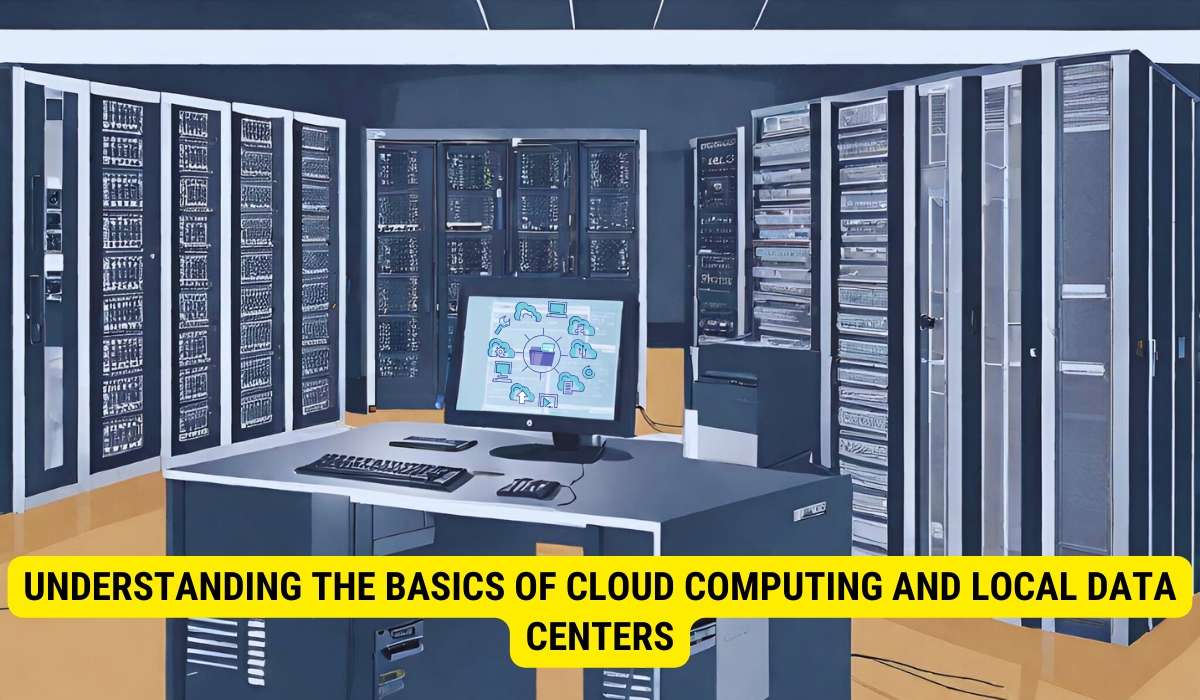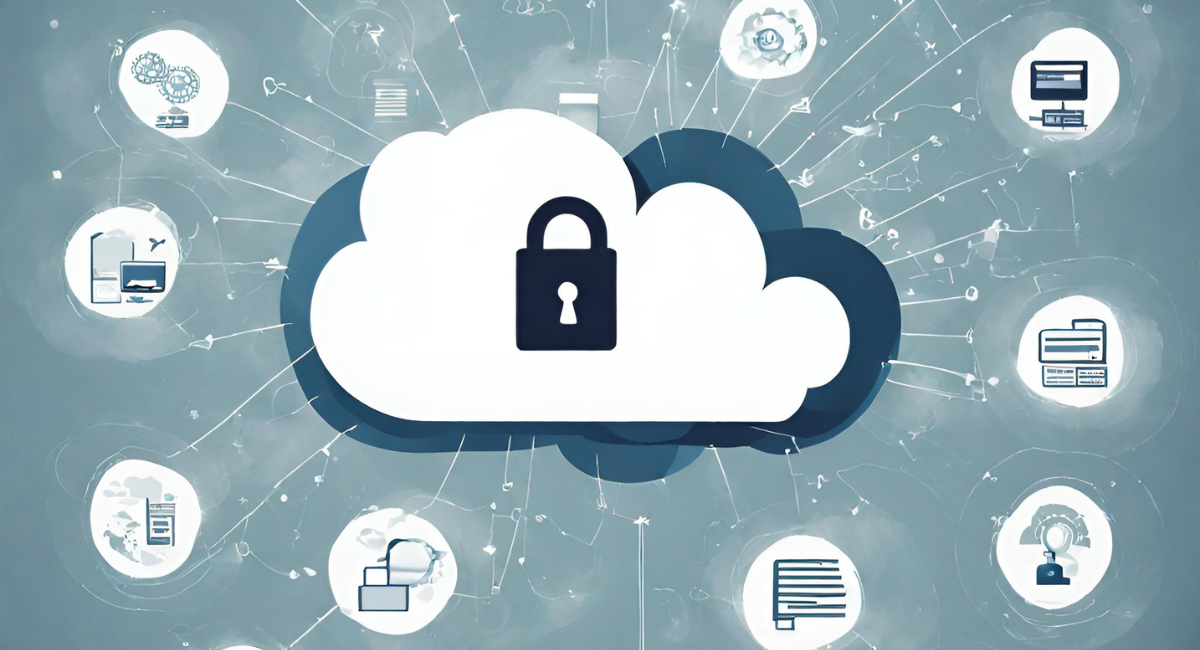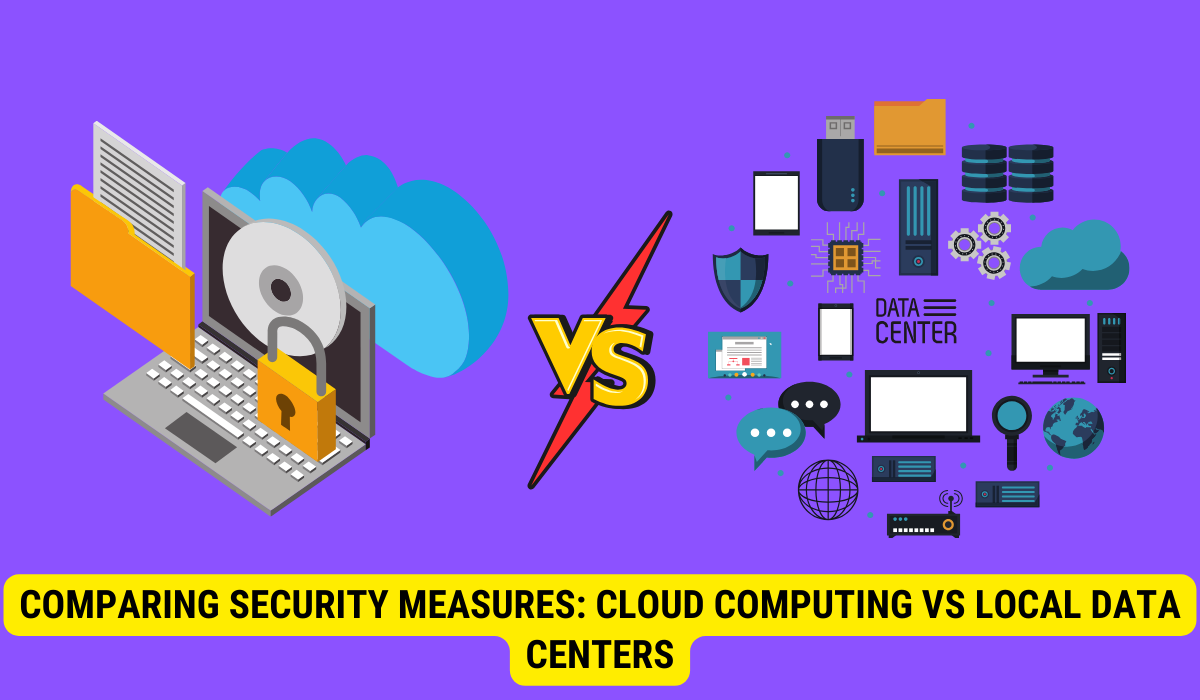Cloud computing offers significant security advantages over local data centers. These advantages include advanced encryption techniques, regular security updates, distributed infrastructure for resilience, robust access controls, and comprehensive disaster recovery and backup solutions. While local data centers offer direct control over infrastructure, they often come with challenges like significant upfront investments and limitations in scalability and flexibility.
Cloud computing has appeared as a popular and effective alternative to traditional local data centers, offering numerous advantages, particularly regarding security. Together, we will delve into the various security benefits of cloud computing and compare them to local data centers. By understanding these advantages, businesses can make informed decisions and enhance their overall security posture.
Understanding the Basics of Cloud Computing and Local Data Centers

Before delving into the security advantages, defining and differentiating cloud computing and local data centers is essential.
Cloud computing and local data centers are two distinct approaches to managing and accessing computing resources. Each has its own set of benefits and considerations.
Defining Cloud Computing
Cloud computing refers to delivering computing services, such as storage, dispensation power, and applications, over the Internet. It allows users to access resources on-demand without the need for physical infrastructure.
Cloud computing has developed how businesses and individuals enter and utilize computing resources. Instead of relying on physical attendants and infrastructure, cloud computing enables users to access virtualized possessions hosted on remote servers.
One of the primary benefits of cloud computing is its scalability. Cloud services enable users to adjust their resource allocation according to their requirements effortlessly. This level of flexibility enables companies to promptly respond to changing demands and avoid the costs and complexities of managing physical infrastructure.
Additionally, cloud computing offers greater accessibility and collaboration. Operators can access their data and applications from any place with an internet connection, making remote work and collaboration more seamless.
What is a Local Data Center?
On the other hand, a local data center refers to a physical facility within an organization’s premises, housing servers, networking equipment, and storage devices. It is managed and maintained by the organization itself.
Local data centers have been the traditional approach to managing computing resources. They give organizations complete control over their infrastructure and data, as everything is stored and managed on-site.
Local data centers offer advantages, such as low latency and high network speeds. Since the infrastructure is physically located within the organization’s premises, data transfer and processing times are minimized, resulting in faster response times.
Moreover, local data centers provide organizations with a greater sense of security and compliance. Organizations can implement and enforce their security measures and ensure compliance with industry regulations by keeping data within their premises.
However, local data centers also come with their own set of challenges. They require significant upfront investments in hardware, software, and infrastructure. Organizations must allocate resources for maintenance, upgrades, and scalability, which can be costly and time-consuming.
Furthermore, local data centers may face limitations in terms of scalability and flexibility. As organizations grow and their computing needs increase, they may face challenges in expanding their infrastructure to meet the demand.
In conclusion, cloud computing and local data centers have advantages and considerations. The choice between the two depends on various factors, including the organization’s needs, budget, and security requirements. Understanding the differences and profits of each approach is vital in making informed decisions about managing and accessing computing resources.
The Security Risks of Local Data Centers
Local data centers come with their fair share of security risks that organizations need to address to ensure the safety of their data and systems.
When it comes to local data centers, one major challenge that organizations face is the need to implement robust physical security measures. These measures are crucial in safeguarding the facility and preventing unauthorized access. Controlling access to the data center is paramount, as it confirms that only authorized personnel can enter the premises. Access control systems, such as key cards or biometric scanners, can achieve this.
In addition to access control, local data centers must implement surveillance systems to monitor and record activities within the facility. This includes using CCTV cameras, motion sensors, and alarm systems. With these security measures in place, organizations can deter potential intruders and quickly respond to security breaches.
Another physical security concern for local data centers is safeguarding against natural disasters. Depending on the geographical location, data centers may be at risk of floods, earthquakes, hurricanes, or other natural calamities. Organizations must invest in disaster recovery plans to mitigate these risks and implement measures such as reinforced infrastructure, backup power supplies, and off-site data backups.
Data Breach Potential
While physical security is crucial, organizations must also address the potential for data breaches in local data centers. A data breach can occur for various reasons, including a weak security infrastructure, insider threats, or sophisticated cyberattacks targeting the organization’s network.
One common vulnerability in local data centers is improper encryption protocols. Without encryption, malicious actors can easily access and exploit sensitive data stored in the data center. Organizations must ensure that data at rest and in transit is encrypted to protect against unauthorized access.
Insider threats also pose an important risk to local data centers. Employees or contractors with access to the data center may intentionally or unintentionally compromise the facility’s security. Organizations must implement strict access controls, conduct regular security training, and monitor user activities to detect and prevent insider threats.
Furthermore, local data centers are not immune to sophisticated cyberattacks. Hackers may target the organization’s network to gain unauthorized access to the data center and steal sensitive information. Organizations must implement robust cybersecurity measures, such as firewalls, intrusion detection systems, and regular vulnerability assessments to mitigate this risk.
In conclusion, local data centers present several security risks that organizations must address to protect their data and systems. By implementing robust physical security measures, addressing data breach potential, and investing in cybersecurity, organizations can mitigate these risks and confirm the safety of their valuable assets.
The Security Strengths of Cloud Computing

Cloud computing strengthens security in several ways, mitigating the risks local data centers face and providing a more secure atmosphere for data and applications.
One of the key security strengths of cloud computing lies in its utilization of advanced encryption techniques. Cloud service providers invest heavily in these techniques to protect data in transit and at rest. Encryption confirms that even if data is intercepted, it remains unreadable and useless to unauthorized individuals. This level of encryption provides an additional layer of security, giving users peace of mind knowing their sensitive information is well-protected.
In addition to advanced encryption, cloud providers prioritize regular security updates and patches. By consistently updating and patching systems, they ensure that security vulnerabilities are promptly addressed. This proactive approach minimizes the risk of exploitation by threat actors seeking to exploit outdated software or hardware. It also helps to maintain the overall integrity of the cloud infrastructure, reducing the likelihood of security breaches.
Moreover, cloud computing offers enhanced security through its robust network infrastructure. Cloud service providers typically have multiple data centers placed in different geographical regions. This distributed infrastructure helps to ensure redundancy and resilience, making it more difficult for attackers to compromise the system. In a localized security incident or natural disaster, data and applications can be seamlessly transferred to another data center, minimizing downtime and ensuring business continuity.
Furthermore, cloud providers often employ advanced security measures such as intrusion detection systems (IDS) and intrusion prevention systems (IPS). These systems continuously monitor network traffic and identify suspicious activities or potential threats. By promptly detecting and responding to such incidents, cloud providers can mitigate security risks and protect their users’ data and applications.
Another security strength of cloud computing is the ability to implement strong access controls and authentication mechanisms. Cloud providers offer various authentication methods, including multi-factor authentication, to ensure that only authorized individuals can enter the cloud resources. This helps stop unauthorized access and decreases the risk of data breaches caused by cooperated credentials.
Additionally, cloud computing allows users to implement data backup and disaster recovery solutions. Organizations can securely store their data and create redundant copies in different locations by leveraging the cloud’s scalable storage capabilities. This protects against data loss and ensures that data can be rapidly reestablished in the event of a disaster or system failure.
In conclusion, cloud computing offers numerous security strengths that enhance data protection and applications. From advanced encryption techniques to regular security updates, robust network infrastructure, intrusion detection and prevention systems, strong access controls, and data backup and disaster recovery solutions, cloud providers prioritize security to provide users with a secure and reliable computing atmosphere.
Comparing Security Measures: Cloud Computing vs Local Data Centers

When comparing security measures, it is essential to understand how cloud computing and local data centers differ regarding accessibility, control, disaster recovery, and backup.
Accessibility and Control
Organizations with a local data center have direct control over their infrastructure and can physically access it. However, this also means they are responsible for implementing security measures. Conversely, cloud computing offers broader accessibility, allowing authorized users to enter resources from anywhere with an internet connection while leaving security responsibilities to the cloud provider.
Disaster Recovery and Backup
Cloud computing excels in disaster recovery and backup capabilities. Cloud providers typically have redundant infrastructure, ensuring data remains accessible during hardware failures or natural disasters. Regular backups and data replication further reduce the risk of data loss compared to local data centers.
Making the Transition: Switching from Local Data Centers to Cloud Computing
While the advantages of cloud computing are apparent, organizations must carefully plan their transition from local data centers to the cloud to confirm a smooth and secure migration process.
Steps to Transitioning
Organizations should start by assessing their current infrastructure and identifying which workloads and data can be migrated to the cloud. They should also evaluate potential cloud service providers, considering security certifications, data privacy, and scalability.
Overcoming Potential Challenges
Organizations should be prepared for potential challenges during the transition. These challenges may include training employees on new cloud technologies, redesigning systems to optimize cloud infrastructure, and addressing legacy applications that may not be compatible with the cloud environment.
Key Takeaways
- Advanced Encryption: Cloud computing uses sophisticated encryption techniques to secure data in transit and at rest.
- Proactive Security Maintenance: Cloud providers prioritize regular system updates and patches to address exposures and protect data.
- Distributed Infrastructure: Cloud services operate on a distributed infrastructure, providing resilience against local failures and natural disasters.
- Strong Access Controls: Cloud computing offers rigorous access controls and authentication mechanisms, ensuring only authorized individuals access the data.
- Backup and Disaster Recovery: Cloud providers facilitate comprehensive backup solutions and disaster recovery capabilities, minimizing the risk of data loss.
FAQs
What is the difference between cloud computing and local data centers?
Cloud computing delivers computing services over the internet on-demand, without the need for physical infrastructure. In contrast, a local data center is a physical facility on an organization’s premises housing servers, storage devices, and networking equipment.
How does cloud computing enhance data security?
Cloud providers utilize advanced encryption, consistently update and patch systems, maintain robust network infrastructure, employ intrusion detection and prevention systems, and offer strong access controls and authentication mechanisms.
Why might some organizations still choose local data centers over cloud computing?
Local data centers provide organizations with complete control over infrastructure and data. They also benefit from low latency high network speeds, and may meet specific regulatory requirements.
What are the disaster recovery benefits of cloud computing?
Cloud providers have redundant infrastructure across multiple data centers, ensuring data remains accessible during hardware failures or natural disasters. They also offer regular backups and data replication.
What challenges might organizations face when transitioning to cloud computing?
Organizations may encounter challenges like training employees on new technologies, addressing legacy application compatibility, and redesigning systems for optimal cloud functionality.
Conclusion
Cloud computing’s security strengths are increasingly recognized, offering a robust alternative to traditional local data centers. While local solutions offer direct control, the numerous security benefits, scalability, and flexibility provided by cloud computing make it a compelling choice for many organizations. Transitioning to the cloud requires careful planning but can empower businesses with enhanced security and efficiency.
